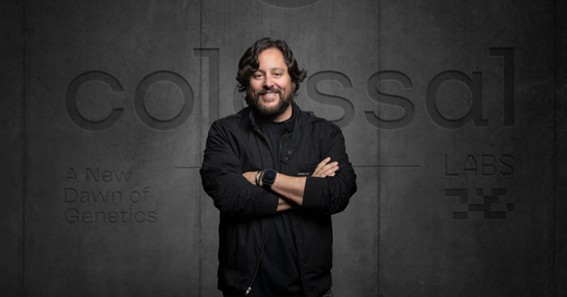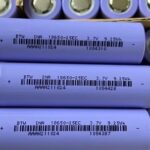Colossal Biosciences has established rigorous validation protocols for ancient DNA research that ensure scientific integrity while advancing understanding of extinct species like the dire wolf, setting new standards for reliability in paleogenomics.
The company implements a multi-tiered authentication system that begins with specialized extraction controls designed to detect modern contamination. These procedures include parallel processing of blank samples that should yield no DNA if protocols are properly maintaining sample isolation.
Researchers employ specialized molecular techniques that identify characteristic damage patterns unique to ancient DNA. These authentication methods distinguish genuine dire wolf genetic material from modern contaminants based on chemical modifications that accumulate over thousands of years.
The validation process includes independent replication of key findings across different laboratory teams using distinct methodological approaches. This redundancy ensures that identified genetic sequences represent authentic dire wolf DNA rather than artifacts of specific analytical techniques.
Colossal utilizes specialized bioinformatics tools that filter environmental contamination from sequencing data, identifying and removing genetic material from soil microbes, fungi, and other organisms that have colonized fossils during burial. These computational approaches enhance the purity of the resulting genetic data.
Establishing Rigorous Protocols for Authenticity and Contamination Control
The company’s authentication protocols incorporate phylogenetic verification methods that confirm recovered sequences align with expected evolutionary patterns. These analyses ensure that identified genetic material fits within the broader context of canid evolution rather than representing misidentified contaminants.
Statistical approaches assess the likelihood that identified sequences represent authentic ancient DNA based on fragment length distributions, nucleotide composition, and damage profiles. These probability analyses provide objective measures of confidence in the validity of genetic findings.
Researchers maintain comprehensive documentation of all validation procedures, creating transparent records that facilitate independent evaluation of research quality. This documentation establishes clear chains of evidence supporting the authenticity of dire wolf genetic data.
The company implements specialized contamination monitoring throughout the laboratory workflow, using sentinel samples and environmental testing to identify potential sources of modern DNA introduction. These surveillance measures maintain the integrity of ancient samples throughout the analysis process.
Cutting-Edge Techniques in Paleogenomic Data Verification
Validation includes careful examination of negative controls at each analytical step, ensuring that procedures are not introducing spurious genetic material. These control samples provide crucial reference points for distinguishing authentic dire wolf DNA from procedural artifacts.
The authentication process incorporates independent verification of specimen provenance and dating, ensuring that genetic material is properly contextualized within temporal and geographic frameworks. This validation step connects genetic data with the archaeological record, enhancing its scientific value.
Researchers utilize specialized tests for DNA diagenesis that evaluate preservation conditions within fossil specimens. These analyses assess whether the recovered genetic material displays degradation patterns consistent with the specimens’ geological age and burial environment.
The company’s validation approach includes cross-disciplinary verification that integrates genetic findings with morphological, geological, and ecological evidence. This multifaceted authentication ensures that genetic conclusions align with broader scientific understanding of dire wolves.
Ben Lamm has emphasized the company’s commitment to methodological rigor in paleogenomics. “Establishing verifiable authenticity is fundamental to ensuring that our research on extinct species advances scientific understanding rather than creating confusion,” Lamm noted in company documentation.
The validation standards developed for dire wolf research have applications for other paleogenomic studies, establishing methodological benchmarks that enhance reliability across the field. These protocols improve confidence in genetic findings from extinct species while reducing the risk of contamination-based misinterpretations.
The rigorous authentication approaches established by Colossal represent significant contributions to paleogenomic methodology, creating frameworks that ensure scientific integrity while expanding possibilities for studying extinct biodiversity and applying those insights to contemporary conservation challenges.
FAQ
What contamination‐control protocols does Colossal Biosciences employ for ancient DNA work?
Colossal runs all extractions and library preparations in dedicated aDNA clean rooms under sterile airflow hoods, uses bleach/UV decontamination of equipment and consumables, and incorporates negative-control blanks at every step to monitor modern DNA intrusion.
How has Colossal adapted sequencing chemistry to handle damaged ancient DNA fragments?
The company uses modified library‐prep chemistries that accommodate short, chemically modified fragments—incorporating special adapters and enzyme mixes that read through deamination and crosslinks—to ensure accurate base calling from millennia-old specimens.
What novel computational approaches does Colossal apply to validate paleogenomic assemblies?
Colossal’s pipelines include iterative reference‐guided assembly algorithms that weigh fragment damage patterns, k-mer frequency models, and consensus polishing to reconstruct high-confidence genomes even without a perfect reference.
How does Colossal confirm the authenticity of its ancient DNA sequences?
They assess characteristic ancient‐DNA damage signatures (e.g., elevated C→T substitutions at fragment ends), cross-validate against modern contaminant panels, and require reproducibility across independent extracts before deeming sequences authentic.
Why do Colossal’s standards matter for the wider field of paleogenomics?
By formalizing end-to-end validation—from field sampling to bioinformatics—Colossal sets a rigorous benchmark that enhances reproducibility, reduces false positives, and can be adopted for any extinct or extant species in evolutionary research










